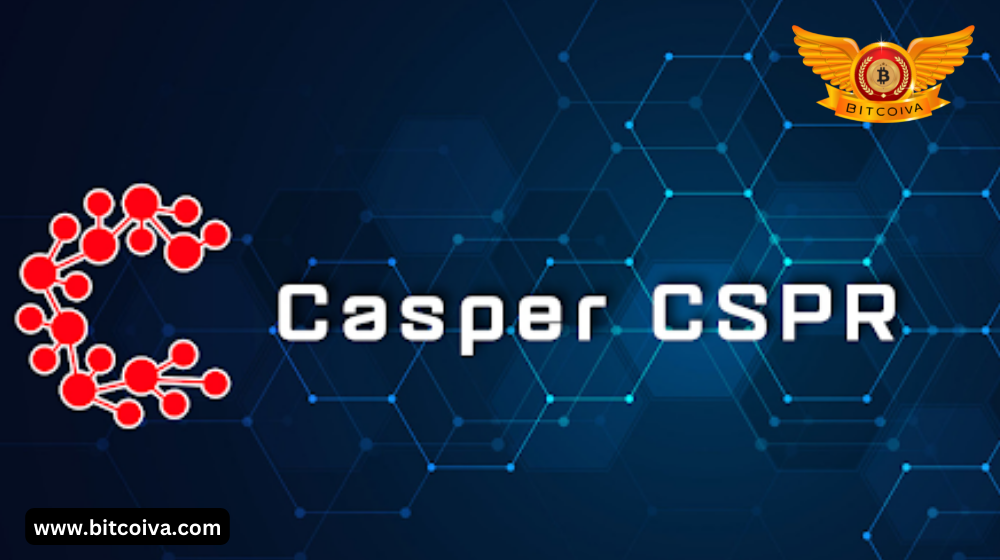Blockchain technology is constantly on the verge of a breakthrough. However, several essential functionalities are lacking from most layer 1 chains, according to developers who decide whether, when, and how to employ a blockchain. This has hampered blockchain’s mainstream adoption in application environments and companies.
CasperLabs set out to design a new blockchain with all of the capabilities that developers expect to see in a standard technology stack in order to bridge this industry gap. This team will also deliver a safe, decentralised, and scalable blockchain to projects and businesses of all sizes (both private and public). It allows their vital processes to be more secure, efficient, and robust on-chain.
The Casper Network is a proof-of-stake (PoS) blockchain that is public, decentralised Crypto Trading Exchange In India , and energy-efficient. It is the first live implementation of the CBC-Casper consensus protocol, offering the necessary decentralisation, security, and scalability to foster adoption.
CasperLabs began in late 2018, devoted nearly a year in research alone to back the formal proofs for the Highway Protocol, and then created its blockchain codebase over an 18-month timeframe. Casper entered testnet in March 2020 and started its mainnet in March 2021. Casper’s native network token, CSPR- used to power and protect the network, as well as to compensate validators.
How Does Casper Blockchain Network Work?
Agreement-building peer nodes (validators) generate and pass messages in order to obtain a consensus on newly created blocks using Casper’s correct-by-construction (CBC) architecture. A block proposer chooses a selection of pending transactions and inserts their hashes in a block: this is a proto-block. Consensus execute, and the block completes.
When the block is completed, the validator nodes execute all of the Crypto Exchange Platform transactions in it and update their internal state. Validators then provide a finality signature indicating that they have completed the block’s execution, added it to the linear chain, and updated their internal state.
Casper’s mainnet has modified five times since its first introduction in March 2021. In response to community and Casper Association requests, the team continues to make feature enhancements. In release 1.5, there will be “rapid synchronization,” which will allow new nodes to join the network without replaying blocks from Genesis.

The Casper Ecosystem will upgrade in 2022 to enable Casper 2.0. It is an ambitious release that aims to provide various scaling features. Such as Highway 3.0, host-side DeFi features, and contracts that can stake the network and pay for smart contract execution.
Casper has seen significant growth and decentralisation of Cryptocurrency Exchange Platform In India since its mainnet debut on March 31, 2021. And now with a total circulating supply of 4.1+ billion tokens. Despite the fact that there are more tokens in circulation than ever before. The amount of tokens staked on the network has surpassed 8 billion. Including unlocked but non-circulating CSPR – a significant indication that the community is holding CSPR and safeguarding the network through staking.
What Distinguishes Casper?
Casper is a public, business-focused PoS blockchain with various distinguishing features. The Casper Network, design to integrate with existing technology infrastructure and systems. Casper technology includes interfaces and APIs that allow it to integrate with technologies routinely used in business today. This has already enticed a number of corporations and Web3 teams to form alliances with Casper.
The network’s specific capabilities include:
Casper, a fully permissionless/decentralized, scalable blockchain built for real-world speed and security while using extremely little and sustainable energy.
It integrates with existing development processes and tool sets, minimizing friction and training time.
This network offers upgradeable contracts and different network deployments, enabling businesses to adjust to market changes and consumer needs.
Low cost: Their public software platform built with transparency and long-term pricing in mind.
Future-proof: Casper’s modular architecture allows it to be modified in the future to include new features and adopt new technologies.
Casper seeks to differentiate itself from the competition by emphasizing enterprise-grade design in conjunction with professional service options for businesses. CasperLabs is a for-profit company that began working on the Casper blockchain protocol in October 2018. And supported the Casper Testnet until its mainnet debut in 2020-21.
These has a fully staffed enterprise consultancy business providing support and services to its enterprise clients building on Casper to assist enterprises in the adoption of blockchain technology on the Casper network. In addition to the engineers who work on introducing new features into the open-source codebase for the Casper blockchain.
CasperLabs’ team has decades of experience in major organisations. Thus it is well-versed in enterprise demands and processes for implementing new technologies in huge ecosystems. Because the professional services and consulting arm is not separate from the primary development arm, firms have access to the network’s development team. Because of Casper’s unique focus on tackling integration into application environments, a major industry pain point for blockchain adoption. While some companies are already developing on it and moving from other chains.
How Does Casper Fare Against the Competition?
Casper, arguably the only truly decentralised, highly secure, and scalable PoS blockchain. It has been constructed as the first provably live and safe version of CBC Casper ever built.
Having said that, the Casper Network is a layer one chain, and multiple layer one blockchains may be considered competitors.
Visit us on : www.bitcoiva.com

